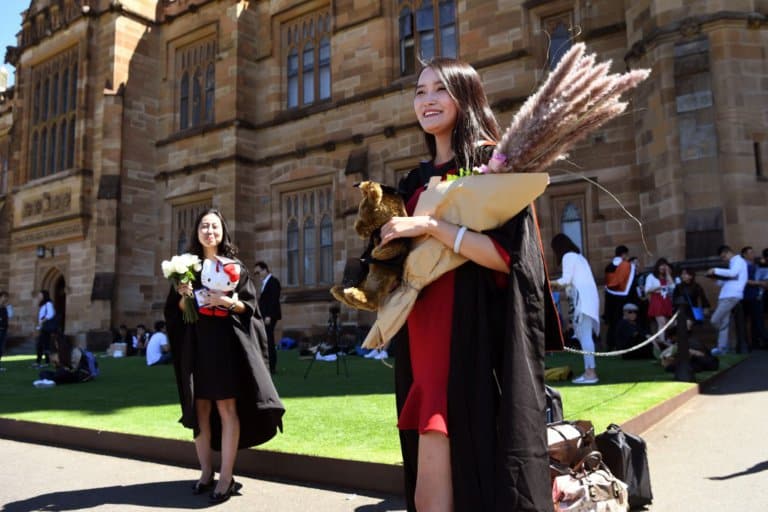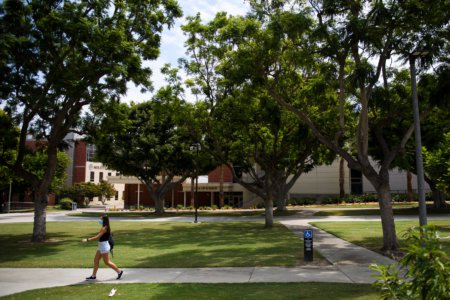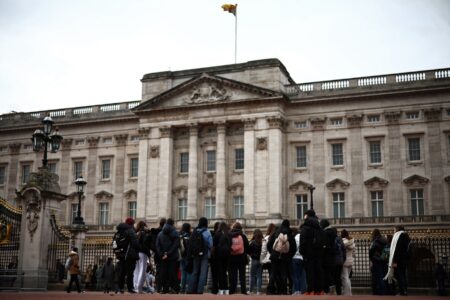
Studying abroad can be an expensive affair, but there are ways to make the experience more wallet-friendly.
As an international student, there are way more things to consider such as flight tickets and moving costs. There are also student visas you need to apply for depending on the country.
So an application fee waiver in Australia might go a long way.
For students hoping to study in Australia, the visa application process can be quite straightforward but costs 1,600 Australian dollars or more per application.
There is a hefty list of requirements you have to meet as well, like proof of English proficiency and confirmation of enrolment — both of which have hidden costs too.
But once you pay and get your visa, the Student visa (subclass 500) will allow you to live, work (usually 40 hours per fortnight) and study in Australia for a maximum of five years.
Working while you study can help boost your income and pad your resume for future endeavours, so it’s a win-win.

Australia has a rich history and so many things to see and do. Application fee waivers can help you save up enough to enjoy the best the country has to offer. Source: AFP
Why is it important to get an application fee waiver in Australia?
Application fees are charged to pay for administration costs.
For some universities and colleges, this fee helps deter applicants who are not serious about their admission because only those committed will part with their money.
Some argue that fees have the opposite effect, making it difficult for eager students to apply, especially when they face financial barriers to their education.
On average, university application fees in Australia range from AU$50 to AU$100.
This might sound like a small amount in the grand scheme of things — for one application. Imagine if you want to apply to 10 universities. That’s AU$1,000.
Consider all the other things you could use that money for, such as your fees and day-to-day expenses.
After all, the cost of living in Australia is not cheap. But there are certainly ways to curb costs.
What is the cost of living in Australia?
International students, especially those who might be moving out of their family home for the first time, need to learn how to deal with costs outside of the assumed tuition fees and rent.
Utility bills, phone bills, transport fees, food and groceries — they all add up.
To help you calculate estimates, most universities have a breakdown of the cost of living in the cities where they are located.
The University of Notre Dame Australia approximates that you would need AU$405 to AU$750 a week to live in Perth and AU$525 to AU$1,120 a week for Sydney.
Whereas the University of Wollongong maps out the average cost of living in Wollongong between AU$460 and AU$535 a week depending on the type of housing you choose.
These figures are estimates, so they could vary depending on your lifestyle, but they give a good basis for ensuring you have enough funds when studying in Australia.
Considering these numbers, wouldn’t you want an application fee waiver in Australia? Having that extra AU$100 — or several of them — can go a long way.
Are there any other hidden costs for studying in Australia?
There are a few things international students would need to cough up for outside of the typical cost of living things mentioned above.
Believe it or not, there’s more you need to pay for than just your books and course materials.
You must get the Overseas Student Health Cover (OSHC), which will give students access to private health, travel, home and contents, and vehicle insurance in Australia.
Depending on the coverage you want, it can cost from AU$478 for 12 months for a single person to AU$4,200 for 12 months of family cover.
Some students also opt to get private health insurance and even private travel, home and vehicle insurance to cover all aspects.
Some Australian schools also charge student services fees.
The University of Sydney, for example, charges a Student Services and Amenities Fee (SSAF), which goes towards non-academic services and support programmes.
For 2025, the fee is AU$182.50 for full-time students and AU$136.87 for part-time students.
Thankfully, there are universities that don’t charge for this.
For instance, the University of Melbourne does not charge most students for SSAF.
Some exceptions include Commonwealth-supported students (including University of Melbourne students on outbound exchange) and research TrainingProgram students (but there are exemptions for some).

Apart from application fee waivers, many additional costs come with studying abroad. Source: AFP.
How to get an application fee waiver in Australia?
If you’re hoping to save your money to experience the best Australia has to offer, getting application fee waivers is a key step to take. And thankfully, it can be done.
Sometimes it helps just to ask. If a university has this cost, approach them about payment options or exemptions; perhaps they could even assist you with payment plans or guide you to other options.
After all, you never know until you ask.
For some universities, early application is the way to go. To entice applicants, schools dangle early admissions with perks such as an application fee waiver.
Keep your eyes peeled for offers like these, especially for your dream institutions. One way to do this is to follow your favourite universities on their social media platforms to keep up to date with events.
Checking out a university open day is another foolproof way to get an application fee waiver in Australia.
Recruiters might give you a discount code or help you apply on the spot to do away with any fees. This works for both physical and virtual open days, but be careful when you’re speaking to education agents as they might not always have the best in mind for you!
Current students of a university are also exempt from paying application fees, so if you are enrolled and are looking to further your studies, fret not.
Here is a list of universities that allow you to request an application fee waiver in Australia:
View this post on Instagram
1. University of Sydney
The University of Sydney is undoubtedly one of the best in Australia. It regularly ranks in the top 50 of the world’s university rankings, and it offers over AU$135 million in scholarships and prizes each year.
International students applying to the University of Sydney need to pay a non-refundable application fee of AU$150.
However, exceptions are made for students currently enrolled in a programme in the university, students with a full scholarship or sponsorship, or applicants who attended a recruitment event or a roadshow.
2. RMIT University
One of Australia’s original tertiary institutions, RMIT University is considered a world leader in many areas, including art and design, architecture, education, engineering, development, computer science and information systems, business and management, and communication and media studies.
International students from certain countries will need to pay an application fee of AU$100. Check here to find out if your country is on the list.
The application fee is non-refundable but will be credited to your tuition fee deposit once you accept your offer and commence your programme.
View this post on Instagram
3. University of Melbourne
Australia’s number one university according to the QS World University Rankings 2025, the University of Melbourne is no stranger to welcoming international students from around the world. Here, 45% of the student body comprises students from over 150 nationalities.
While international applicants must pay an application fee of AU$150 upon submission of each application made to the university, exemptions are made for the following:
- Current University of Melbourne students
- Applicants who are applying for Research Higher Degree programmes
- Applicants who are sponsored (fully funded) by a government or private company
- Applicants who have been given a signed form by a University staff member at an exhibition or interview programme
- Study abroad or exchange applicants, or applicants who have a study arrangement between the University and your partner institution
- Applicants who are seeking asylum in Australia
4. University of Technology Sydney (UTS)
UTS takes a global approach to its education and has globally ranked degrees that set students up for success after graduation. In Australia, they rank within one of the top 100 universities in the world, according to QS World University Rankings 2024.
Here, international students have to pay a non-refundable AU$100 application fee.
However, the fee can be waived if you are a current UTS student applying for a second degree programme at the university, or you’re a current student at UTS College and applying for entry to a UTS course.
5. Victoria University
Ranked in the top 2% of universities worldwide in the Times Higher Education (THE) World University Rankings, Victoria University had more than 11,000 international students pursuing their studies in their halls.
Here, you’ll need to pay the application fee of AU$75 to have your application assessed by an international admissions officer.
Exemptions are made for current VU students, alumni, and some scholarship applicants.
6. UNSW Sydney
With more than 63,000 students from over 130 countries, UNSW Sydney is always ready to welcome you to join their ranks and pursue your education across its seven faculties in Arts, Design & Architecture, Business, Engineering, Law and Justice, Medicine and Health, Science, and UNSW Canberra.
Here, international applicants must pay a non-refundable AU$150 application processing fee for each online application you submit.
You can waive the fee if you’re applying to an honours year program, diploma programme, postgraduate research programme, or programmes offered at UNSW Canberra.

An application fee waiver in Australia can save you more than just a buck — you just need to know where to look for it. Source: AFP
What if I don’t qualify for an application fee waiver in Australia?
If you don’t meet the requirements for the application fee waiver requests for the above universities, here are five schools that do not require application fees at all:
- UOW College Australia
- The University of Notre Dame Australia
- Bond University
- University of South Australia
- University of Wollongong
- Charles Darwin University
Disclaimer: This article was last updated on December 26, 2024.










